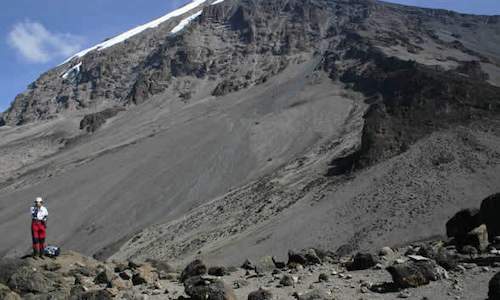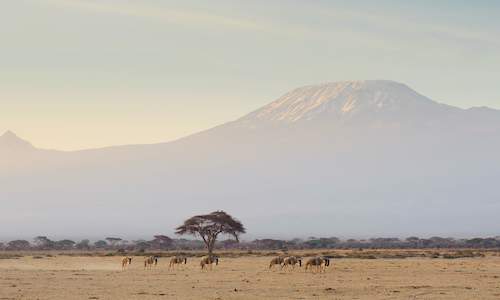
The best way to prepare physically for the climb is to make regular hikes, building up the frequency and length towards the date of travel (but ensuring that one is not overexerted just before leaving). Walking in hilly areas and on rough surfaces is great preparation, as is walking up and down stairs and step-aerobics.
All aerobic exercise helps to strengthen the cardiovascular system: swimming, running, cycling etc. are all good, as is any exercise, which increases / maintains the heart rate for at least 20 minutes. It is advisable to do your physical preparation in the boots that you will be wearing for your climb.
General Advice
On average, less than half the people who attempt to climb Kilimanjaro actually do so. This does not need to be the case, and a few simple strategies can really make the difference.Pole Pole
Go slowly! This is so important because walking slowly allows the body to acclimatise. The speed at which clients walk during the first two days of the climb will determine the chances of reaching the summit. The slower the better. A really good idea is to breathe entirely through the nose for the first two days of walking.
If it is necessary to breathe through the mouth during the initial stages of the climb, then the pace is too fast. Later on, breathing through the mouth will become essential, but (of course, every individual's metabolism varies).
How to Walk
It is advised to imitate the guides' slow, methodical walking style. Knees should be kept 'soft' and not pounded. Paces should be short, measured and rhythmical with each step placed gently. This will help to avoid 'trekkers knee.'Drink
It is essential to drink as much as possible. At least 3-5 litres of fluids (not coffee, tea, alcohol) every day.Staying Healthy During the Climb
Minor ailments are the most common: blisters, colds, stomach upsets etc. Proper precautions should be taken against blisters and any that do appear should be dealt with promptly. Colds can be treated and kept at bay with Lemsip or similar over-the-counter remedies. Stomach upsets do happen in Africa, so it is advisable to pack some Imodium or similar anti-diarrhoea remedies.Acclimatisation and Altitude Sickness
Climbers must be prepared to recognise and respond to early symptoms of altitude sickness, which is caused by reduced levels of oxygen / air density. Any feelings of nausea, headache, fatigue or severe breathlessness should be reported immediately to the guide.
The human body is well capable of adjusting to altitude - the actual individual rate of acclimatisation is a genetic factor - but the process takes time and the best way to minimise the symptoms of Hypoxia is to ascend slowly - i.e if in doubt increase the number of days on the mountain!

 Climbing Kilimanjaro is an amazing achievement, but don’t let poor preparation and undue haste let you down. Dealing with Altitude Sicknes...
Climbing Kilimanjaro is an amazing achievement, but don’t let poor preparation and undue haste let you down. Dealing with Altitude Sicknes... Kilimanjaro is a giant volcanic mountain located in Tanzania, and comprises of 3 distinct volcanic cones. This spectacular natural wonder...
Kilimanjaro is a giant volcanic mountain located in Tanzania, and comprises of 3 distinct volcanic cones. This spectacular natural wonder...